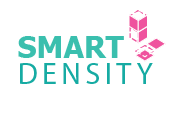Intuition and Evidence: KPF urban planning, through analogue vision and evidence-based design
Guest Speaker: Bruce Fisher | Design Principal, KPF, New York
January 17, 2023
5 Key Takeaways:
- KPF leverages technology in Architecture
KPF Urban interface is a firm that leverages technology and innovation when tackling various urban planning and design issues. KFB holds the strong belief that the power of innovation and collaboration can change the world.
KPF’s use of data analytics informs and guides design practice when planning communities for the future. Urban data collection, scenario analysis and 3D visualisation are all tools that KPF uses throughout all stages of its projects. The combination of observing the lived human experience and smart data helps KPF conceptualise, plan, and better design contemporary cities.
2. Not Just Architecture: The Intersectionality of Urban Planning, Environment, and Technology
The firm isn’t exclusively interested in architecture and the built form of cities. KPF is equally interested in urban planning, environmental performance, and urban interface and how they all overlap. All projects conducted by the firm started as an idea – something that needs to be planned, workshopped, and tested. KPF takes climate, building material, building overage, and greenspace into consideration right from the synthesis of any project. Honing both the architecture and urban form to bring ideas to life is the driving force of KPF.
An issue that arises when carrying out master-planned projects is the volume of stakeholders working on a project, and how that can change over the course of time. It is difficult to retain and synthesise all information to maintain consistent information. That is why KPF developed a web map that stores all the information and data sets relating to a project.
This web map is for both technical and non-technical stakeholders to explore multiple layers of data to better understand the overlap of key project elements. What this platform has allowed is to show the public what density really means in practice. People can play around with this data at home through the easy-to-use interface. The web platform allows people to access all project data and become better informed about a project.
3. Observing The Human Experience and Applying Data Accordingly
KPF explores ways to effectively observe and collect data points about the human experience in cities across the world. KPF infuses these findings with innovation and knowledge and applies the information to projects in cities across the world. The firm is interested in how different building typologies can influence space and people’s day-to-day life in a city. Taking a holistic approach to more technical problems ensures a more relatable human experience.
KPF uses tools like parametric modelling to play around with and explore building configurations so they can be confident all development is as informed as possible.
KPF is not just focused on buildings, but on how people navigate the space in between the built environment. A major factor in all the work conducted by KPF is how neighbourhoods openness influences people’s movement in a space
4. The Importance of Learning and Evolving
The firm is always learning and evolving. KPF has offices around the world which allows the firm to learn and grow its techniques based on lessons learned on a global scale.
With cities across the world having such a diverse set of needs, KPF is able to collect information in its web database and apply the data to various projects with overlapping issues.
The firm wants to enhance spatial variety as much as possible; when KPF identifies an area that is lacking, they are able to measure and then strategically build and shape the landscape accordingly.
KPF observes what’s working well, and what’s not working across a range of contexts. This helps inform a very accurate set of data that is applicable in every stage of a project. Technology and digital tools are a great way to tangibly collect information and learn from previous mistakes and victories.
5. How Digital Tools Can Design For Us
Conceptualising change and growth over time in a trackable manner is fundamental for cities going forward. KPF has found a way to measure patterns and change through a series of wavelength measurements and pedestrian rhythms.
The firm looks at how machine learning can inform everything from urban design to the environment, and the social fabric of cities. By fusing intuitive and creative thinking with measurable data and software, KPF is paving the way into the future.
